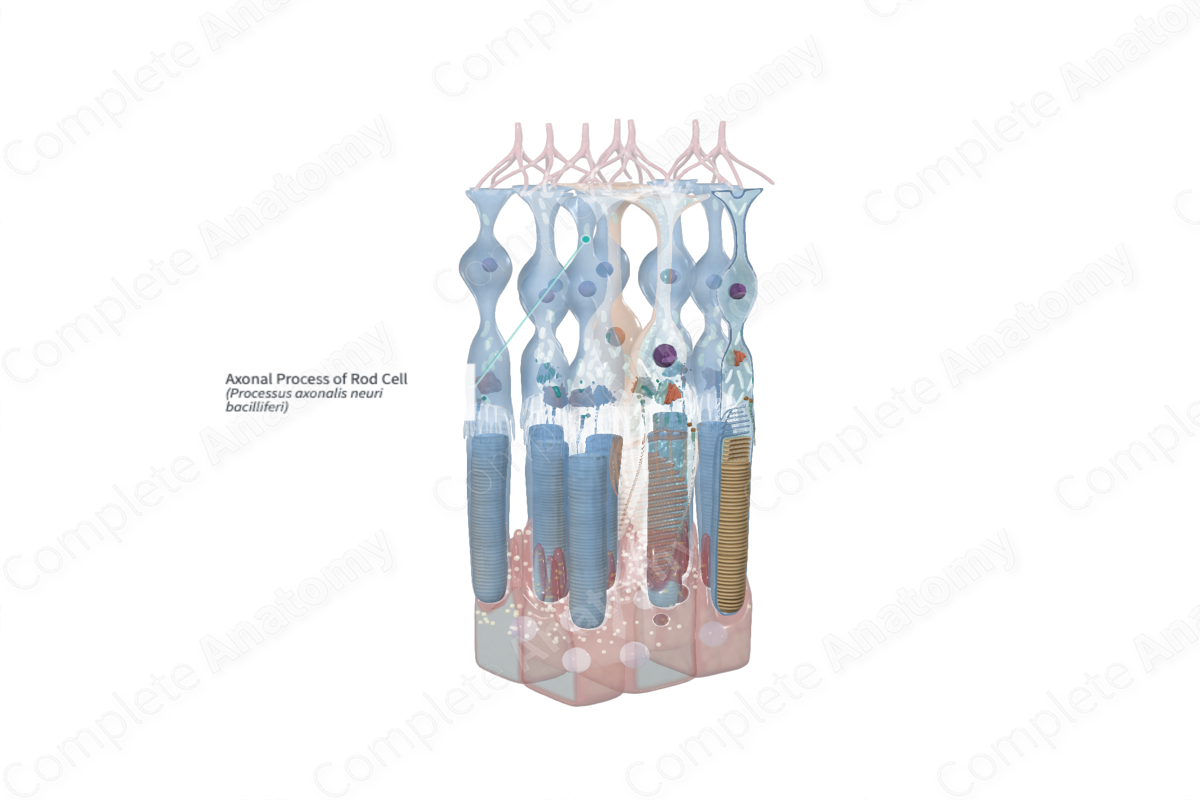
Quick Facts
An axonal process is the process of a neuron by which impulses travel away from the cell body; at the terminal arborization of the axon, the impulses are transmitted to other nerve cells or to effector organs (Dorland, 2011).
Structure and/or Key Features
The axonal process is the elongated part of the photoreceptor cell that transmits information about the light level in the environment detected by a single photoreceptor and communicated as a voltage change from the cell soma to its synaptic terminal. Rod axons have a diameter of approximately 0.5 µm.
The length of the axonal process in rod cells varies greatly depending on the species and location within the retina. In primates, axons may measure 200–400 µm in the para-foveal region (Dartt et al., 2010).
Anatomical Relations
The axonal process of the rod cells extends from the cell body in the outer nuclear layer to the spherule synaptic terminal in outer plexiform layer of the retina. They are interspersed between the somata and axons of other rod and cone cells and the external radial processes of Müller glial cells.
Function
The axonal process carries the electrical signal caused by light stimulation or rod outer segments from the soma (cell body) to the synaptic terminal.
References
Dartt, D. A., Besharse, J., Dana, R., Battelle, B. A., Beebe, D., Bex, P., Bishop, P., Bok, D., D’Amore, P. and Edelhauser, H. (2010) Encyclopedia of the Eye. Elsevier Science, p. 147-152.
Dorland, W. (2011) Dorland's Illustrated Medical Dictionary. 32nd edn. Philadelphia, USA: Elsevier Saunders.

